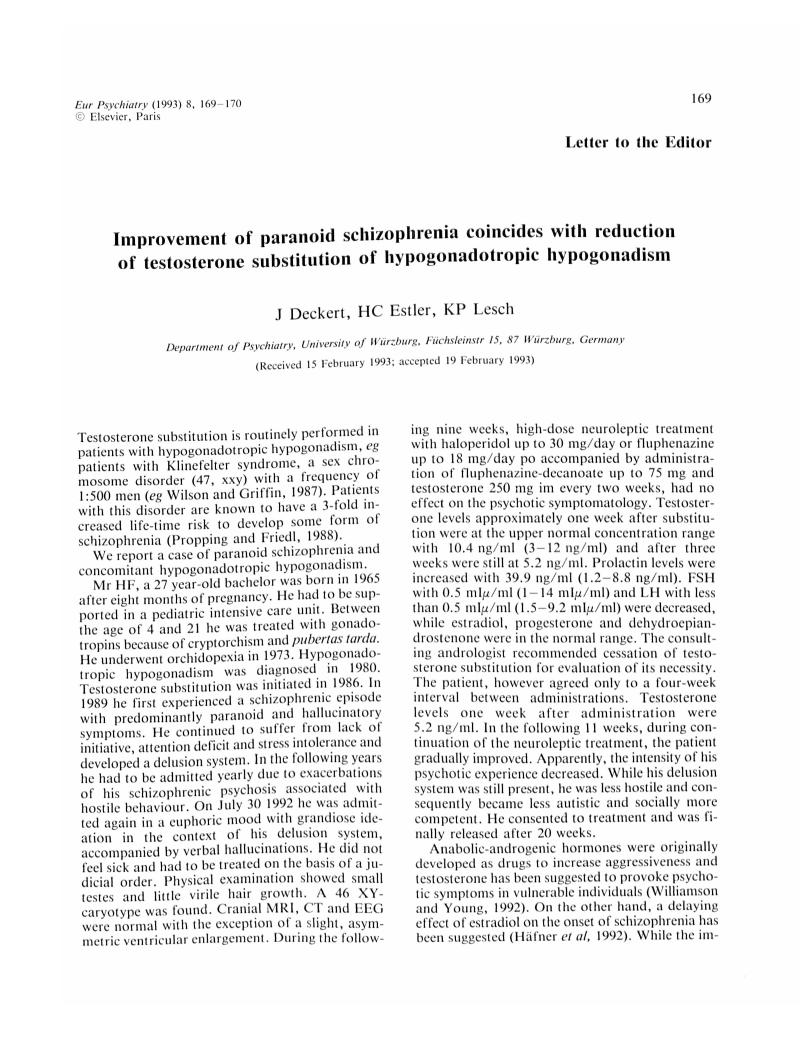No CrossRef data available.
Article contents
Improvement of paranoid schizophrenia coincides with reduction of testosterone substitution of hypogonadotropic hypogonadism
Published online by Cambridge University Press: 16 April 2020
Abstract
An abstract is not available for this content so a preview has been provided. As you have access to this content, a full PDF is available via the ‘Save PDF’ action button.

Information
- Type
- Letter to the Editor
- Information
- Copyright
- Copyright © Elsevier, Paris 1993
References
Häfner, HRiecher-Rössler, AMaurer, KFätkenheuer, BLöffier, W (1992) First onset and early symptomatology of schizophrenia. A chapter of epidemiological and neurobiological research into age and sex differences. Psychiatry Clin Neurosci 242, 109–118CrossRefGoogle ScholarPubMed
Propping, PFriedl, W (1988) Genetic studies of biochemical, pathophysiological and pharmacological factors in schizophrenia. In: Handbook of Schizophrenia, vol 3 (Tsuang, MTSimpson, JC eds). Elsevier, Amsterdam, 579–608Google Scholar
Williamson, DJYoung, AH (1992) Psychiatric effects of androgenic and anabolic androgenic steroid abuse in men: a brief review of the literature. J Psychopharmacol 6, 20–26CrossRefGoogle ScholarPubMed
Wilson, JDGriffin, JE (1987) Disorders of sexual disorientation. In: Harrison's Principles of Internal Medicine (Braunwald, EIsselbacher, KJPetersdorf, RGWilson, JDMartin, JBFauci, AS eds). McGraw-Hill, New York, 1840–1853Google Scholar


Comments
No Comments have been published for this article.